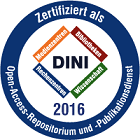Characterizing a novel hepatic NK-like T cell population and defining its function during antiviral immune response
Characterizing a novel hepatic NK-like T cell population and defining its function during antiviral immune response
| dc.contributor.advisor | Abdullah, Zeinab | |
| dc.contributor.author | Symeonidis, Konstantinos | |
| dc.date.accessioned | 2025-03-24T14:01:27Z | |
| dc.date.issued | 24.03.2025 | |
| dc.identifier.uri | https://hdl.handle.net/20.500.11811/12948 | |
| dc.description.abstract | The family of NK-like (NK1.1+) T cells is extremely heterogeneous, with the most predominant members being the type-I and type-II NKT cells. In addition to that, other unconventional T cells, like gamma-delta T and MAIT cells can upregulate NK1.1. Here, we have identified a novel hepatic population of NK1.1+TCRbeta+ cells, distinct from other T cell subsets in the liver, which we termed as NKT-like cells (NLCs). Unlike NKT cells, NLCs lack PLZF and can develop in the absence of CD1d molecule. Strikingly, their development is also unaffected in complete MHC deficient and germ-free mice. Phenotypic characterization revealed that NLCs express the CD8alpha-alpha homodimer and that they are decorated with many NK-related molecules such as Fcer1g, CD244a, and CD160, compared to other hepatic T cells. Additionally, T-bet and Helios are highly enriched transcription factors in the NLCs. Based on their transcriptomic signature, we identified them in human livers as well. Adoptive transfer experiments demonstrated that they derive from thymic PD1+CD4-CD8- T cell progenitors, which will acquire the NK1.1 expression and their mature phenotype in the liver. TCR sequencing revealed that the NLCs have a highly variable TCR, which is functional as indicated by In-vitro stimulation experiments. Compared to other T cells, NLCs respond strongly to IL15 and IL18 stimulation by producing high levels of Granzyme B and various chemokines. Lastly, we showed that NLCs are rapidly activated during LCMV infection, indicated by their expansion and upregulation of their effector molecules Granzyme B and CCL5. Notably, at day 3 post-infection they expressed higher levels of Granzyme B compared to other T cells and even NK cells. In line with this, we showed that they are able to kill LCMV infected cells in vitro. Nonetheless, during chronic infection with LCMV, their numbers dramatically decrease. Overall, our work by shedding light on the heterogeneity of NK-like T cells enabled the identification a novel hepatic subset with unique properties and potent antiviral function. | en |
| dc.language.iso | eng | |
| dc.rights | In Copyright | |
| dc.rights.uri | http://rightsstatements.org/vocab/InC/1.0/ | |
| dc.subject.ddc | 570 Biowissenschaften, Biologie | |
| dc.title | Characterizing a novel hepatic NK-like T cell population and defining its function during antiviral immune response | |
| dc.type | Dissertation oder Habilitation | |
| dc.publisher.name | Universitäts- und Landesbibliothek Bonn | |
| dc.publisher.location | Bonn | |
| dc.rights.accessRights | embargoedAccess | |
| dc.date.embargoEndDate | 01.04.2027 | |
| dc.identifier.urn | https://nbn-resolving.org/urn:nbn:de:hbz:5-81834 | |
| ulbbn.pubtype | Erstveröffentlichung | |
| ulbbnediss.affiliation.name | Rheinische Friedrich-Wilhelms-Universität Bonn | |
| ulbbnediss.affiliation.location | Bonn | |
| ulbbnediss.thesis.level | Dissertation | |
| ulbbnediss.dissID | 8183 | |
| ulbbnediss.date.accepted | 25.10.2024 | |
| ulbbnediss.institute | Medizinische Fakultät / Institute : Institut für Experimentelle Immunologie (IEI) | |
| ulbbnediss.fakultaet | Medizinische Fakultät | |
| dc.contributor.coReferee | Prinz, Marco |
Files in this item

This document has got an embargo.
This item appears in the following Collection(s)
-
E-Dissertationen (1997)



